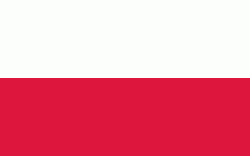Lower Silesian Voivodeship (Lower Silesian Voivodeship)
 |
 |
It is one of the wealthiest provinces in Poland as natural resources such as copper, silver, gold, brown coal and rock materials (inter alia granite, basalt, gabbro, diabase, amphibolite, porphyry, gneiss, serpentinite, sandstone, greywacke, limestone, dolomite, bentonite, kaolinite, clay, aggregate) are widely present. Its well developed and varied industries attract both domestic and foreign investors, thus stimulating economic growth.
Its capital and largest city is Wrocław, situated on the Oder River. It is one of Poland's largest cities, and with a rapidly growing international profile, is regarded as one of the most important commercial, educational and tourist sites in the whole country. the voivodeship is known for its many castles and palaces and is one of Poland's most touristic provinces.
In the past 1,200 years, the region has been part of Great Moravia, the Medieval Kingdom of Poland, the Crown of Bohemia, Habsburg monarchy (Austria), Prussia, the German Empire, and modern Poland after 1945.
Silesian tribes settled the lands at the end of the first millennium after the Migration Period. During the period of Germania Slavica, the region became part of Great Moravia under Svatopluk I of Moravia. Mieszko I brought the various existing Silesian duchies under the rule of the Piast dynasty and they became the Duchy of Silesia. It was again divided into small realms reigned by Silesian branches of Piast princes after the testament of Bolesław III Wrymouth in 1138. With the Ostsiedlung, the cultural and ethnic Germanic influence grew with an influx of immigrants from the German-speaking areas of the Holy Roman Empire, of which Silesia was a direct part until the 1330s when it was subjugated to the Kingdom of Bohemia, then together with it became part of the Habsburg monarchy (1526), then the Kingdom of Prussia (1742/44), and subsequently the German Empire (1871). In 1945, Lower Silesia was made part of Poland as agreed at the post-war Potsdam Conference. As a consequence, Lower Silesia suffered a nearly total loss of its pre-war population between 1945 and 1950. Polish citizens dispossessed by the Soviets were then settled in the now emptied lands.
Lower Silesia was, during the early medieval era, one of Poland's cultural centers. The Book of Henryków (1273), which contains the earliest known sentence written in the Polish language, as well as a document which contains the oldest printed text in Polish, were both created within it. Złotoryja, Poland's first town, was granted municipal privileges according to German Magdeburg rights by Henry the Bearded. Over the centuries, Lower Silesia has experienced several epochal events such as the Protestant Reformation, the Silesian Wars, industrialisation and the two World Wars.
Map - Lower Silesian Voivodeship (Lower Silesian Voivodeship)
Map
Country - Poland
 |
 |
| Flag of Poland | |
Poland has a temperate transitional climate and its territory traverses the Central European Plain, extending from Baltic Sea in the north to Sudeten and Carpathian Mountains in the south. The longest Polish river is the Vistula, and Poland's highest point is Mount Rysy, situated in the Tatra mountain range of the Carpathians. The country is bordered by Lithuania and Russia to the northeast, Belarus and Ukraine to the east, Slovakia and the Czech Republic to the south, and Germany to the west. It also shares maritime boundaries with Denmark and Sweden.
Currency / Language
| ISO | Currency | Symbol | Significant figures |
|---|---|---|---|
| PLN | Polish złoty | zÅ‚ | 2 |
| ISO | Language |
|---|---|
| PL | Polish language |












































